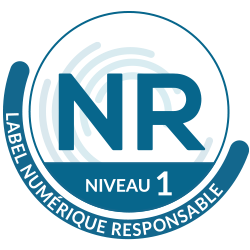Identifying the location of welds is one of the requirements of ISO 3834-EXC2-3-4.
This is the prerequisite for identifying and tracing welds. Identifying the location of welds is an essential part of the welding specifications delivered to the customer during the construction preparation phase.

Identifying weld locations and symbolic representation: what’s the difference?
The identification of weld locations should not be confused with the simplified, symbolic representation of welds (see image 1).
In fact, welds can be represented on a drawing of a welded assembly following the rules for drawing up technical drawings standardized by EN ISO 2553 (February 2014).

Image 1 – example of an identification line.
Source : soudeurs.com
Most technical drawing programs have standardized symbol libraries such as ANSI, ISO, GOST and JIS.
However, although the purpose of this welding symbolism is to explain how welds are made on a given drawing, the identification of the location is intended to show the customer where the welds on his equipment are located, and is linked to elements drawn up in the welding book.
What technique can be used to identify the location of welds?
Beforehand, the welds are prepared in a pre-execution summary table, and each one is given an identifier (S01, W01 etc.). These identifiers are then generally represented by a “bubble” accompanied by an arrow to designate the welded zone (see image 2).

Image 2: An example of the location of welded joints on a filter separator boiler assembly.
Source: soudeurs.com
To ensure the weld book is complete (generally speaking, and excluding additional technical requirements imposed by the client), each of these welds is marked with a WPS number. Each manufacturing WPS must indicate the reference PQR. And each WPS summarizes the essential parameters for weld preparation. This association of identification number/welding parameters/WPS /PQR poses a serious office automation problem (identification, WPS drafting, PQR scanning, welding summary table report, etc.).
The coordinator quickly finds himself having to juggle drawing software, Word, Excel and Paint in order to achieve the best layout.
It should be noted that technical drawing software is not designed to ensure this layout and traceability of welds in a welding book.
How does Welding Cloud, a SaaS solution by SIRFULL, help you easily identify and trace your welds on a construction drawing for a welding book?
Welding Cloud by SIRFULL frees you from the need to use Word, Excel or any other format for the layout of your welding notebook. From a simple import of a manufacturing drawing from a technical drawing program (in PNG, JPEG, JPG or PDF format), you have all the tools you need to locate traced welds in a single, dedicated solution (see video 1).
Video 1: Welding Cloud by SIRFULL: how to mark welds on a construction drawing without Word, Excel or Paint
From assembled materials to reference PQR and welding parameters, each identifier entered on the drawing is linked to a history of information traced and reported to the customer when the welding book is automatically generated.




